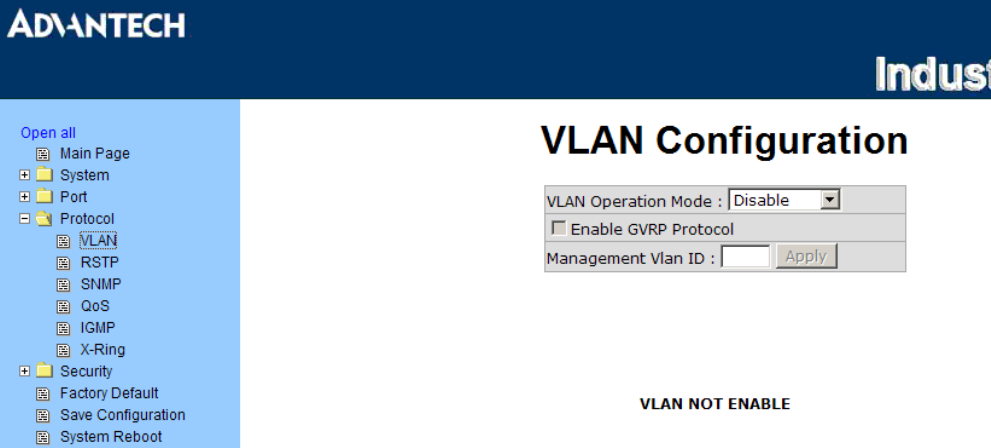
EKI-7758F User Manual 60
3.2.3 Protocol
VLAN configuration
A Virtual LAN (VLAN) is a logical network grouping that limits the broadcast domain, which would allow
you to isolate network traffic, so only the members of the VLAN will receive traffic from the same
members of VLAN. Basically, creating a VLAN from a switch is logically equivalent of reconnecting a
group of network devices to another Layer 2 switch. However, all the network devices are still plugged
into the same switch physically.
The industrial switch supports port-based and 802.1Q (tagged-based) VLAN. The default configuration of
VLAN operation mode is “
Disable
”.
Figure 3.30: VLAN Configuration
VLAN configuration - Port-based VLAN
Packets can go among only members of the same VLAN group. Note all unselected ports are treated as
belonging to another single VLAN. If the port-based VLAN enabled, the VLAN-tagging is ignored.
In order for an end station to send packets to different VLAN groups, it itself has to be either capable of
tagging packets it sends with VLAN tags or attached to a VLAN-aware bridge that is capable of
classifying and tagging the packet with different VLAN ID based on not only default PVID but also other
information about the packet, such as the protocol.


















